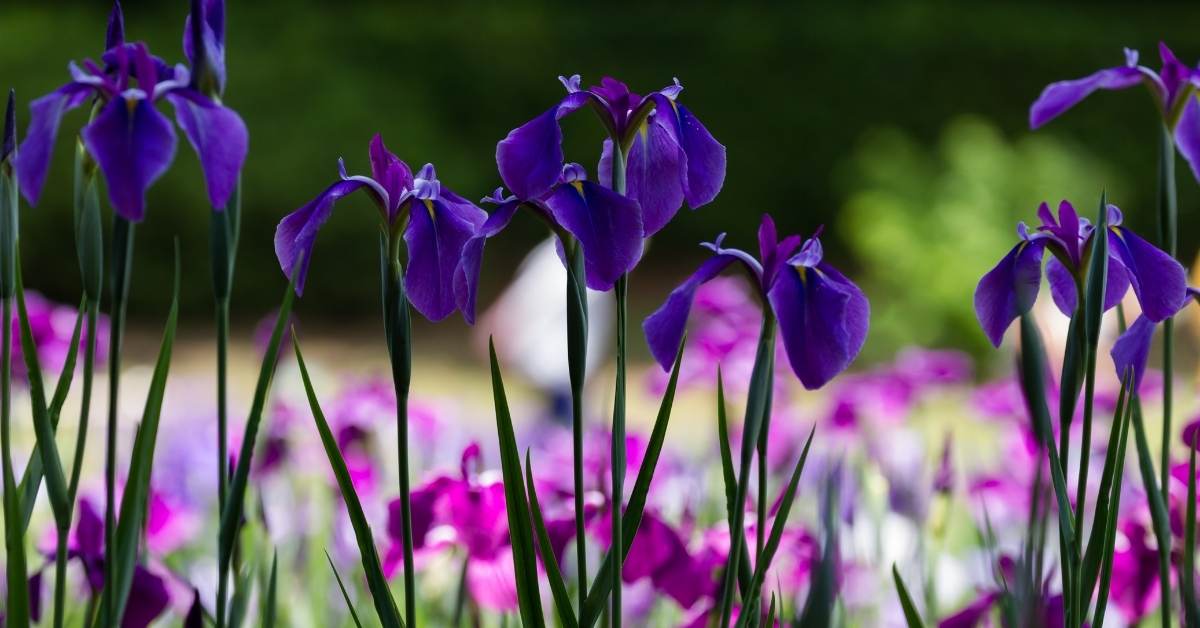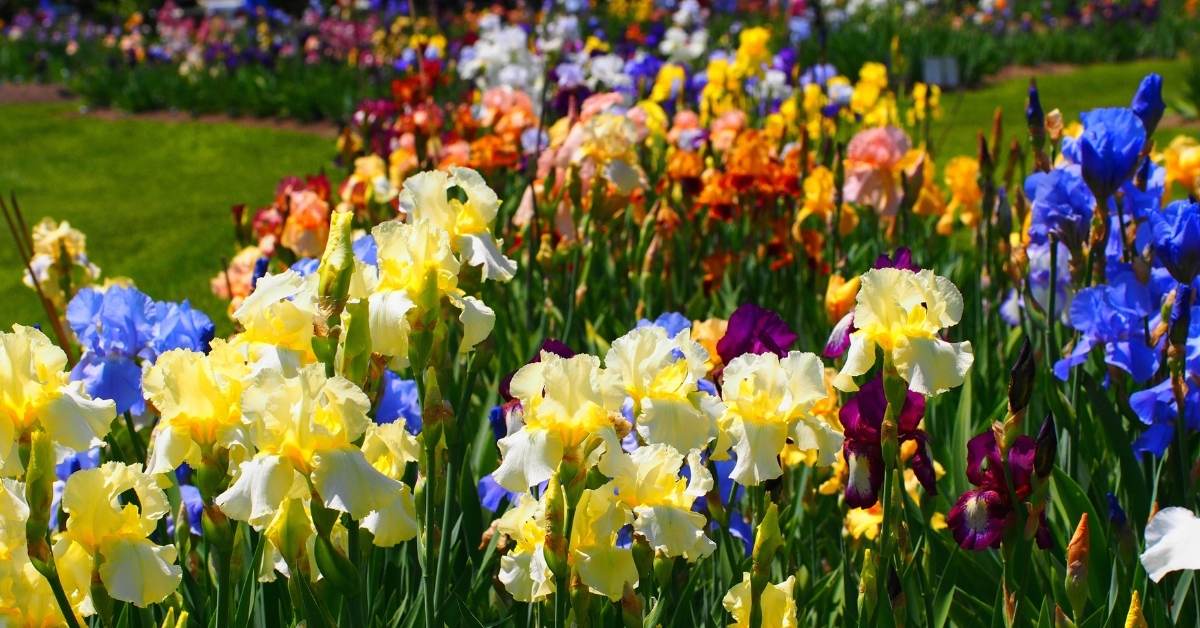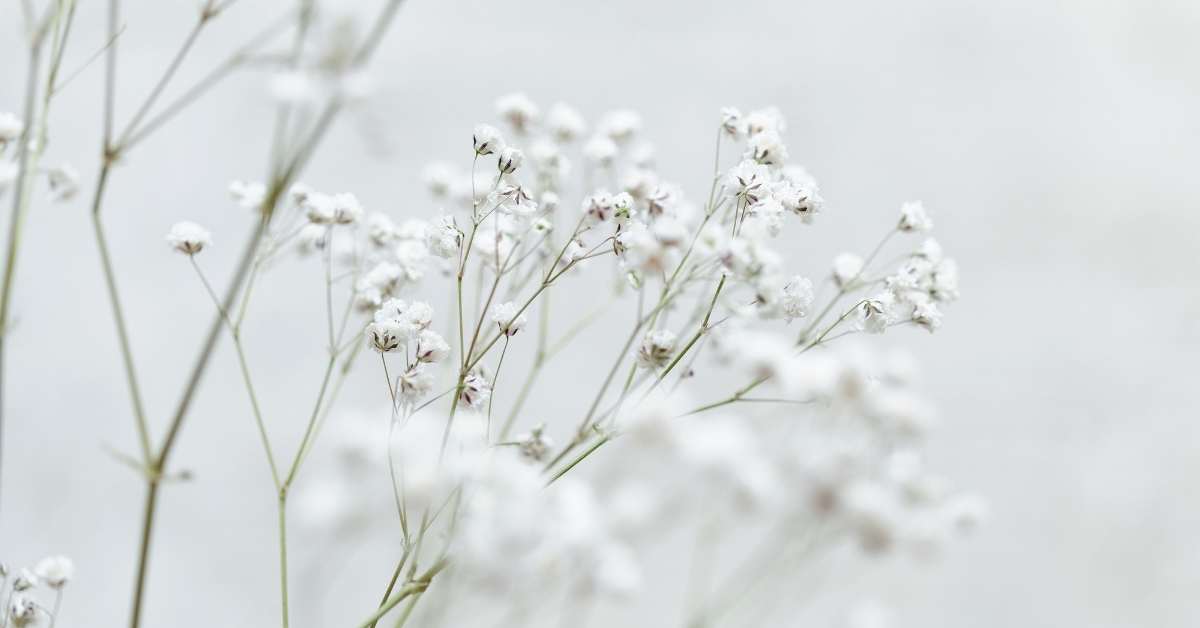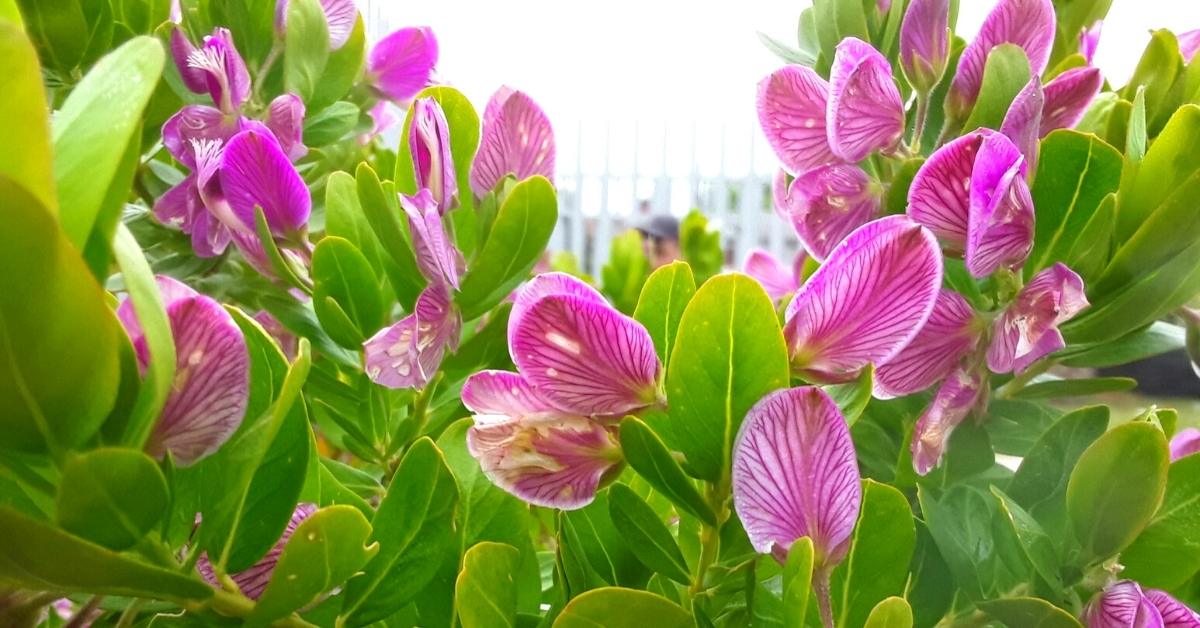Irises are one of the most beautiful and versatile flowers you can grow in your garden. They come in a dazzling array of colors, shapes, and sizes, and they can bloom from spring to fall. Whether you want to create a stunning focal point, a fragrant border, or a colorful container, irises can help you achieve your gardening goals.
In this article, you will learn everything you need to know about how to plant an iris garden successfully. You will discover the best practices for choosing, planting, caring, and designing with irises. You will also find out how to name and register your own iris creations. By the end of this article, you will be ready to enjoy the beauty and charm of irises in your own backyard.
What are irises, and why grow them?
Irises are perennial plants that belong to the Iridaceae family. They have long, sword-shaped leaves and showy flowers that consist of three upright petals (called standards) and three drooping petals (called falls). Some irises have fuzzy hairs on the falls (called beards), while others have smooth falls (called beardless).
Irises are named after the Greek goddess of the rainbow, reflecting their diverse colors and patterns. Irises are easy to grow and require minimal maintenance. They are also drought-tolerant, deer-resistant, and attractive to pollinators. Irises can add elegance, fragrance, and texture to any garden style.
How to choose the right irises for your garden?
There are hundreds of iris varieties to choose from, so how do you decide which ones to grow? The first thing to consider is the size and shape of your garden space. Irises range from miniature dwarf bearded (below 8 inches tall) to tall bearded (over 27 inches tall), and each size has its own blooming season. You can mix and match different sizes and colors to create a continuous display of irises throughout the spring and summer.
You can also look for reblooming irises, which can bloom again in the fall or winter. Another thing to consider is the climate and soil conditions of your garden. Irises prefer well-drained, slightly alkaline soil and at least 7 hours of full sun a day.
However, some irises can tolerate partial shade, acidic soil, or wet areas. You can check the hardiness zone and growing requirements of each iris variety before buying them.
What is the best way to plant Iris?
When planting an iris rhizome, make sure the top of the rhizome (iris root) is level with the soil’s surface in moderate winter regions and about an inch below the surface in cold (daytime freezing) winter locations.
Plant higher rather than deeper by spreading out the roots face downward on a mound of dirt and packing the earth tightly around the roots to minimize air pockets.
The distance between various kinds (names) should be between 2 and 3 feet. Some types should be spaced around one foot apart. By the second or third year, they will be fully filled in.

How to plant an iris garden step by step?
Once you have chosen your irises, you need to prepare the planting site and the rhizomes. The rhizomes are the thick, fleshy roots that store nutrients and moisture for the plants. You can buy them online or from a local nursery, or you can divide them from existing plants.
The best time to plant or transplant irises is from mid-summer to six weeks before frost. Here are the steps to plant an iris garden:
- Dig a hole about 10 inches deep and wide for each rhizome. Loosen the soil and amend it with compost or organic matter if needed.
- Make a small mound of soil in the center of the hole and place the rhizome on top of it. Spread the roots around the mound and fill the hole with soil. Make sure the top of the rhizome is exposed or slightly below the soil surface, depending on your climate.
- Space the rhizomes about 12 to 18 inches apart, depending on their size. Plant them in groups of three or more for a better effect.
- Water the plants well after planting and keep them moist until they are established. Mulch lightly around the plants to conserve moisture and prevent weeds.
- Fertilize the plants with a low-nitrogen fertilizer in early spring and again a month after bloom. Avoid using manure or high-nitrogen fertilizers, as they can cause rot or leaf burn.
- Cut back the foliage to about 6 inches in late fall or early winter to prevent diseases and pests.
Iris size classification
- MDB – Miniature Dwarf Bearded: below 8″ tall
- SDB – Standard Dwarf Bearded: 8″ to 16″ tall
- BB – Border Bearded: 16″ to 27 1/2″ tall
- MTB – Miniature Tall Bearded: 16″ to 27 1/2″ tall
- IB – Intermediate Bearded: 16″ to 27 1/2″ tall
- TB – Tall Bearded: over 27 1/2″ tall
How much light does Iris need?
Iris plants require at least 7 hours of direct sunshine every day to blossom well. Irises would thrive in full-light locations in your yard over the winter and spring. During the scorching summer days in California, Iris can withstand moderate shade ( or similar climate).
Plant in full sunlight. The shade will only reduce the number of blooms a plant produces.
Plant so the roots are in the ground, but the swollen central part of the root is lying on the ground – uncovered. If you cover this over too deeply, the plant will not bloom.
What is the best soil type for Iris?
Iris plants may thrive in any soil that drains well. Water should never pool at the base of the plants since it can rot them. Potting soil may simply be used to build up heavy clay and sandy soils. Simply raise flower beds a few inches in places with poor drainage.
What kind of fertilizer does Iris need?
Irises are robust feeders, and they should be fertilized twice a year with a balanced fertilizer like 6-10-10 or 15-15-15. Irises should never be fertilized with heavy nitrogen fertilizer (30-10-10). Fertilizer can be mixed into the soil at the time of planting.
Valentine’s Day and Labor Day are good reminders to fertilize. However, these dates may need to be adjusted for your hardiness zone.
How much water do Irises need?
Irises roots should be maintained wet but not soggy or swampy immediately after planting. Keep the plants moist until the winter rains arrive in the West, and then let the rain take over when the rain stops.
During the summer, water the plants once a week or so. This is critical for iris reblooming since they will not bloom without summer water. As long as there is adequate drainage, automatic sprinkler systems will suffice. Overwatering is a common mistake that can result in illness or soft, smelly rot.
How can I divide and transplant Irises?
Iris rhizomes can be split and planted from mid-summer to six weeks before frost for optimum results. You should divide your irises every four to five years. Dig out the clump, remove the dirt, then twist or cut the rhizome at each junction with a knife.
Each potato-like mass has a joint between it. Then, using scissors, cut the leaves back to 5-6 inches and the roots to 3 inches. Sort irises and replant rhizomes that appear to be healthy. Extras can visit new places or spend time with friends and relatives. Irises of the same kind (color) should be planted about 12 inches apart.
Iris Garden Design: How To Plant An Iris Garden

If you’re only growing a few plants, arrange them in your own iris garden in a triangle shape. The point of the triangle should point towards the spot you see this garden from.
This arrangement gives a sense of depth to the small planting.
In more extensive plantings, try to make a large block of these plants for maximum effect. Note that if you’re only growing a few iris of different colors, then another plan is to mix them into the general garden and surround them with perennials. This allows you to hide the foliage after the massive blooms are finished.
How to design an iris garden for maximum impact?
Irises are stunning on their own, but they can also enhance other plants and features in your garden. Here are some tips on how to design an iris garden for maximum impact:
- Use contrasting colors and textures to create interest and harmony. For example, you can pair yellow irises with blue or purple ones or smooth beardless irises with fuzzy bearded ones.
- Use variegated foliage irises to add color and pattern to your garden even when they are not in bloom. Plant them near the edge of your garden where you can appreciate their details.
- Use fragrant irises to add scent and attract pollinators to your garden. Plant them near your patio, walkway, or seating area where you can enjoy their aroma.
- Use different shapes and sizes of irises to create depth and movement in your garden. For example, you can plant tall irises in the back, medium irises in the middle, and dwarf irises in the front of your garden bed. You can also plant irises in curves, triangles, or clusters to create a sense of flow and direction.
- Use containers, trellises, or other structures to add height and drama to your iris garden. You can plant irises in pots, baskets, or window boxes and place them on your porch, deck, or balcony. You can also grow climbing irises on trellises, arbors, or fences for a vertical accent.
General Iris Garden Maintenance
There is very little maintenance required. When old leaves slide away without resistance, it’s time to get rid of them. Your iris flower can be pollinated by bees, resulting in a seed pod (egg-shaped). To avoid your garden from being overrun by some new UNWANTED iris flower color, remove old bloom stems (containing seed pods). Weeds should surround plants to allow for proper air circulation.
Use variegated foliage iris up front where the variegation can be appreciated.
Color choice is whatever suits your fancy but does try to arrange the flowers so that contrasting colors are beside each other (yellow next to blue) for maximum “bang” in the garden design.
Plant fragrant species next to the edge of the garden to make it easier to bend and smell them.
And those would be the main tips in planting and growing an iris garden.
How to care for Irises?
Iris is recognized by their rhizome, which stores nutrients and moisture and resembles somewhat chunky fingers. They are also recognized by the beards, which are found on the lower petals or falls and resemble a furry caterpillar.
These are often brightly colored and very distinctive. For instance, Bearded Iris needs to be planted in an open spot that receives sun at least half a day. They like a rich composted neutral to alkaline soil that must be free draining.
Plant so that the top of the rhizome is exposed to bake in the sun. Tuck the roots firmly into the soil—water in. A common mistake is to plant the rhizome too deeply.

Iris appreciates a light application of fertilizer in early spring and again a month after bloom. Never use animal manure as it is too high in nitrogen. I use a mix of 3 parts superphosphate, 2 parts blood and bone, and 1 part potash. If this is too hard, then a rose fertilizer would do.
Remove old leaves regularly and snap off the old stem down at the rhizome when flowering is finished.
Apply lime sulfur spray during the winter and a rose spray against leafspot and aphids during the summer.
After about three to four years, the clumps will need to be divided up. Dig up the whole clump, discard the old growth and replant the new rhizomes, which will be on the outside of the clump. January through March is a good time to do this. The plant will produce new roots and needs to do this before winter.
Watch this awesome iris garden tour!
How to care for irises throughout the year?
Irises are low-maintenance plants that only need some basic care throughout the year. Here are some tips on how to care for irises throughout the year:
- Remove old leaves, flower stems, and seed pods regularly to keep your plants healthy and tidy. You can also trim any damaged or diseased leaves as needed.
- Weed around your plants to prevent competition and improve air circulation. You can also apply a thin layer of mulch around your plants to suppress weeds and retain moisture.
- Divide your plants every three to five years or when they become overcrowded or less productive. Dig up the clumps, cut off any old or rotten rhizomes, and replant the healthy ones in fresh soil.
- Protect your plants from pests and diseases by inspecting them regularly and applying organic or chemical controls as needed. Some common problems that affect irises are iris borers, aphids, leaf spots, and soft rot.
- Enjoy your irises by cutting some flowers for bouquets or sharing some rhizomes with your friends and family. You can also enter your irises in shows or competitions to showcase your gardening skills.
How to choose the best companion plants for irises?
Irises can benefit from having companion plants that complement their beauty, fill in the gaps, and provide contrast and diversity. Companion plants can also help attract beneficial insects, deter pests, and improve soil health. However, you need to choose companion plants that have similar or compatible growing conditions and do not compete or interfere with your irises. Some of the best companion plants for irises are:
- Ornamental grasses: They can add texture, movement, and height to your iris garden. They can also provide a backdrop or a border for your irises. Some examples are blue fescue, feather reed grass, and fountain grass.
- Spring bulbs: They can bloom before or along with your irises, creating a colorful and cheerful display. They can also naturalize and multiply over time. Some examples are daffodils, tulips, and crocuses.
- Perennials: They can extend the blooming season of your iris garden, as well as provide different shapes, colors, and scents. They can also hide the fading foliage of your irises after they are done blooming. Some examples are peonies, daylilies, and lavender.
- Annuals: They can add instant color and variety to your iris garden, as well as fill in any empty spaces or gaps. They can also be easily changed or replaced every year. Some examples are pansies, marigolds, and petunias.
Descriptive terms for Iris plant
- Beards – Each of the falls has a line of fuzzy hairs at the top.
- The upper three petals are the standards.
- Lower three petals of the falls
- Bicolor – standards are single color, and falls have different color varieties
- Bi-tone – On the rises, a lighter tone of the same hue, and on the falls, a darker tone.
- Flounces are beard appendages that look like small flowers that emerge from the tip of the beard.
- Hafts are the tops of the falls (the area surrounding beards)
- Horns are beard extensions that have been detached from the autumn petals.
- Plicata – A lighter ground color with a stippled or stitched margin color.
- Iris is a re-bloomer, meaning it blooms again in the late summer, fall, or winter.
- Shelf – Standards and falls are the same color tone
- Space Age – Iris with frills, horns, or spoons
- Spoons are protruding appendages from beards.
- Style Arms – Above the beards, a little stiff section
Who can name an Iris?
A human (hybridizer) permits two iris flowers to cross-pollinate and create a seed pod. A pod yields around 100 seeds gathered and sown (with exact records denoting pod parent and pollen parent, etc.).
The iris plants bloom after two or three years, and the hybridizer selects which ones are worth viewing the following year. Plants that are deemed unacceptable are destroyed. After two or three years of evaluating growth patterns and bloom colors, acceptable plants are named and registered with the American Iris Society.
A name cannot be duplicated, and picking a name necessitates a couple of pages of guidelines. It takes 5 to 7 years to complete the process.
How to name and register your own iris creations?
If you are feeling adventurous and creative, you can try to breed your own iris varieties by cross-pollinating different irises. You can use a small brush or a cotton swab to transfer the pollen from one iris flower to another. You can also remove the anthers (the pollen-bearing parts) from one flower and place them on the stigma (the receptive part) of another flower.
You can then wait for the seed pods to form and collect the seeds when they are ripe. You can sow the seeds in pots or trays and grow them until they bloom. You can then select the ones that you like and discard the rest. If you want to name and register your own iris creations, you need to follow some guidelines and rules set by the American Iris Society (AIS). Here are some steps to name and register your own iris creations:
- Make sure your iris is unique and distinct from other existing irises. You can check the online database of registered irises on the AIS website or consult with other iris experts.
- Choose a name that is not already taken, not too long, not too similar to other names, and is not offensive or misleading. You can use up to 30 letters, spaces, and punctuation marks for your name. You can also use a prefix or a suffix to indicate your origin or affiliation.
- Fill out the registration form and pay the registration fee on the AIS website or by mail. You need to provide some information about your iris, such as its parentage, color, size, shape, bloom season, fragrance, and rebloom habit. You also need to provide a clear and accurate color photo of your iris.
- Wait for the confirmation and approval of your registration from the AIS. You will receive a certificate of registration and a registration number for your iris. You can then use your name and number to label, display, and sell your iris.
Conclusion
Irises are wonderful plants that can add beauty, fragrance, and color to your garden. They are easy to grow and care for, and they offer a wide range of varieties to suit your preferences and conditions. By following the tips and steps in this article, you can plant an iris garden successfully and enjoy its rewards for years to come.
You can also experiment with creating your own iris varieties and naming and registering them with the American Iris Society. Irises are truly a joy to grow and share with others.
How often should I water my irises?
Irises need regular watering during their growing and blooming seasons, but they do not like to be soggy or swampy. You should water them deeply once a week or so, depending on the weather and soil conditions. You can reduce watering in the fall and winter when the plants are dormant.
How do I prevent iris borers from damaging my irises?
Iris borers are caterpillars that feed on the rhizomes and leaves of irises, causing rot and wilting. You can prevent them by keeping your garden clean and removing any old leaves; flower stems, and debris. You can also apply a systemic insecticide in early spring when the borers are active. You can also hand-pick and destroy any borers or infected rhizomes that you find.
How do I choose the best irises for my climate and zone?
Irises are hardy plants that can adapt to various climates and zones, but some types may perform better than others in certain conditions. You can check the hardiness zone and growing requirements of each iris variety before buying them. You can also consult with local iris growers or nurseries for recommendations. Generally, bearded irises are more tolerant of heat and drought, while beardless irises are more tolerant of cold and wet.

